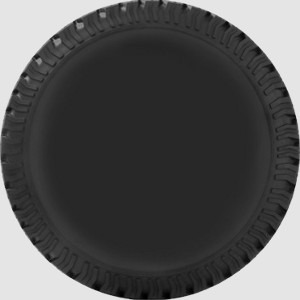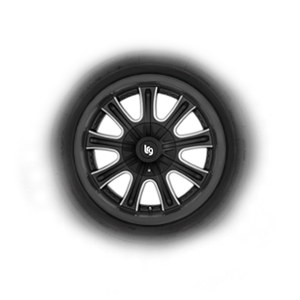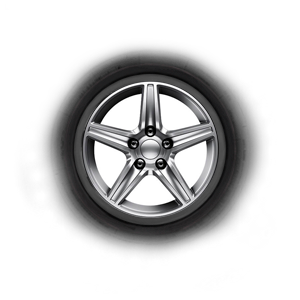Tire Size Calculator & Comparison
Are you in the market for new tires but need help determining which size to choose? Our interactive tire size comparison tool is here to help. You can emulate the differences between two tire sizes with a few clicks. Our charts will assist you in determining whether the alternative tire size is worth buying.








(Set Size1 to OEM Size)
| Speed | 20 mph | 30 mph | 40 mph | 50 mph | 60 mph | 70 mph | 80 mph | 90 mph |
|---|---|---|---|---|---|---|---|---|
| Actual | 21.2 | 31.8 | 42.4 | 53.0 | 63.6 | 74.2 | 84.8 | 95.4 |
| Speed Diff | 1.2 | 1.8 | 2.4 | 3.0 | 3.6 | 4.2 | 4.8 | 5.4 |
<iframe name = "TireComparison Calculator" id="tirecalc" width=100% height=100% style="border:none;" src="https://moontire.com/tire-size-calculator/t1=33&a1=10&r1=16&t2=35&a2=12.5&r2=17&u=i&frame=1">
Interactive Tire Size Comparison Tool
Different tire sizes may affect the car’s performance, handling, fuel efficiency, braking distance, and cornering stability.
The interactive tool on this webpage is designed to help car owners compare the difference between two tire sizes. This can be particularly useful when considering a tire upgrade or replacement.
By inputting the tire size information for two different tires, the tool compares various data points, such as overall diameter, section width, and aspect ratio. Car owners can see the differences between the two tire sizes and decide whether the alternative tire size is worth trying.
Overall, the interactive tool is a valuable resource for anyone purchasing new car tires.
How to Use the Tire Size Calculator
You can input the tire size in either the metric or flotation measurement system. After inputting the first tire size (original equipment), select the options for the alternative tire size. Once both tire sizes have been inputted, click on the “Compare” button to generate the comparison report to spot differences in overall diameter, section width, aspect ratio, circumference, and revs per mile, as well as a visual representation of the difference in speed.
Understanding Tire Dimensions
When comparing tires, a car owner should consider several key dimensions:
Tire Diameter: This is the measurement of the tire from one end to the other, affecting the tire’s overall height.
Tire Width: This is the measurement of the tire from sidewall to sidewall, and it affects the overall width of the tire.
Sidewall Height: This is the measurement of the tire’s sidewall, and it affects the overall height of the tire.
Circumference: This is the distance around the tire, and it involves the overall diameter of the tire.
Revs/km: This is the number of times the tire rotates per kilometer, impacting the overall speed of the vehicle.
Speed Difference: This is the difference between the new and old tires and simulates the vehicle’s speedo readings.
How bigger tire size affects car’s performance
Larger tire sizes can have a significant impact on a car’s performance. One of the main ways it affects performance is by altering the car’s overall diameter. Larger tires have a larger diameter, which can change the car’s gear ratio and final drive ratio. This can affect the car’s acceleration, top speed, and fuel efficiency. Larger tires also tend to have a wider section width, which can result in increased traction and better handling. They also tend to have a lower aspect ratio, which can result in better stability at high speeds.
Another way larger tire size affects performance is by altering the car’s weight distribution. Larger tires are generally heavier than smaller tires, which can increase unsprung weight. This can affect the car’s suspension and handling, making the ride less smooth and the vehicle more difficult to control.
Also, larger tires can also change the car’s aerodynamics which can affect the car’s fuel efficiency, as well as its ability to handle wind resistance at high speeds.
It’s important to note that while larger tires may offer some benefits in terms of traction and handling, they also have some downsides. They can be more expensive and wear out faster than smaller tires, and they also generally require a higher speed rating, which means they may be more costly to replace. Therefore, it’s essential to consider all of these factors when deciding whether to upgrade to a larger tire size and ensure that the larger tires are compatible with your vehicle before making a purchase.
How to determine the correct tire size for a specific vehicle
Determining the correct tire size for a specific vehicle is vital to provide the best performance and safety. There are a few ways to choose the right tire size for a particular vehicle:
Check the vehicle’s owner’s manual. The owner’s manual will typically have information on the recommended tire size for the car, and it will also have information on the minimum and maximum tire sizes.
Inspect the sidewall. The sidewall of the current tires on a vehicle will have the tire size information printed on it. The tire size will be represented in a series of letters and numbers, such as 205/55R16.
Check the vehicle’s door jamb or glove box. Some vehicles have a sticker on the driver’s side door jamb or inside the glove box that lists the recommended tire size for the car.
Consult the manufacturer’s website. Most vehicle manufacturers have information about the recommended tire size for their cars on their websites.
Ensure the new tire size is within the recommended range of the vehicle’s manufacturer. Using a tire size that is too large or too small can result in poor handling, reduced fuel efficiency, and even danger. It is also essential to ensure that the new tire size can fit within the vehicle’s wheel wells.